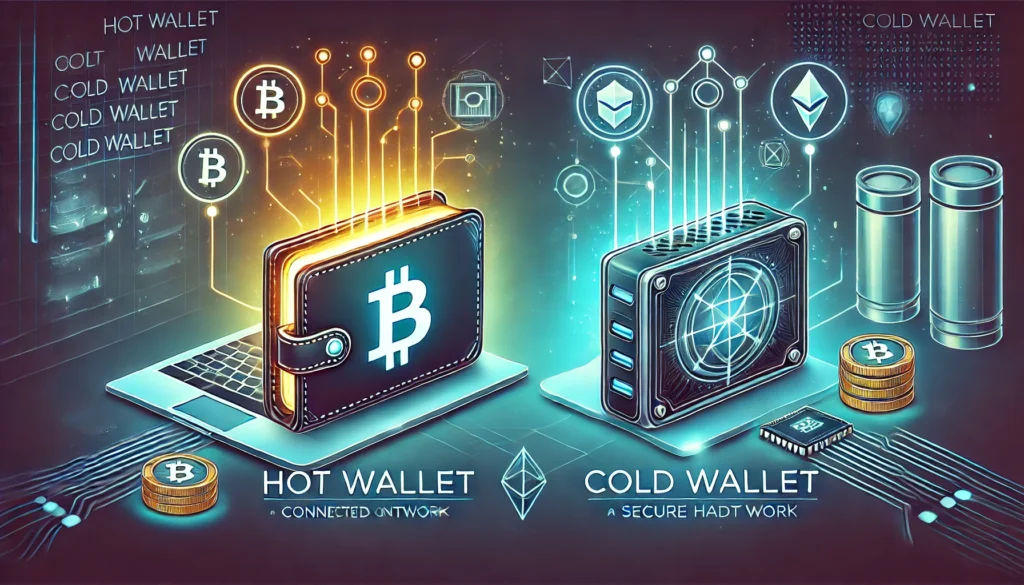How to Invest in Crypto with $100 or Less So, you’ve been hearing about crypto everywhere—from your friends, social media, and even the news. The idea of making money with cryptocurrency sounds exciting, but there’s one problem: you don’t have thousands of dollars to invest. Good news—you don’t need to! In fact, you can start investing in crypto with as little as $100 (or even less) and still see meaningful growth over time. In this blog, we’ll break down exactly how to invest in crypto with a small budget, step by step, in a way that’s simple and easy to understand. Table of Contents Step 1: Set Realistic Expectations First things first—let’s talk about expectations. Investing $100 in crypto won’t make you a millionaire overnight, but it can grow over time if you invest wisely. The key is to focus on long-term growth rather than quick profits. Also, crypto is a highly volatile market. Prices go up and down frequently, so it’s important to be patient and think long-term. Step 2: Choose a Safe and Easy-to-Use Crypto Exchange To start investing, you’ll need to use a cryptocurrency exchange—this is a platform where you can buy, sell, and store your crypto. Some beginner-friendly exchanges include: Coinbase (Great for beginners) Binance (Lower fees, more options) Kraken (Good security and customer support) eToro (Easy for social trading and learning) Sign up on one of these platforms, complete the necessary verification steps, and deposit your $100. Step 3: Select the Right Cryptocurrencies Now that you have money in your exchange account, it’s time to choose what to invest in. Here are some solid options for beginners: Bitcoin (BTC) – The most well-known and established cryptocurrency. A safer long-term investment. Ethereum (ETH) – The second-largest crypto, used for smart contracts and decentralized applications. Solana (SOL), Cardano (ADA), or Polygon (MATIC) – Promising projects with lower prices and strong growth potential. Stablecoins (USDC, USDT, BUSD) – Good for stability and earning interest in crypto savings accounts. Diversification is Key With only $100, you might not be able to buy full units of Bitcoin or Ethereum, but most exchanges allow you to buy fractional amounts. It’s always a good idea to spread your investment across 2-3 coins rather than putting all your money into just one. Step 4: Choose Your Investment Strategy Even with a small budget, you can still use smart investment strategies. Here are two beginner-friendly approaches: 1. Dollar-Cost Averaging (DCA) Instead of investing your entire $100 at once, consider investing $10 per week over 10 weeks. This way, you buy crypto at different prices and reduce the impact of market volatility. 2. Buy and Hold (HODL) If you believe in the long-term potential of your chosen cryptocurrencies, you can simply buy them and hold onto them for months or even years. Historically, holding Bitcoin and Ethereum for the long term has been profitable. Step 5: Store Your Crypto Securely Once you’ve bought your crypto, keeping it safe is crucial. You have two main storage options: Keep it on the Exchange – Convenient, but slightly riskier if the exchange gets hacked. Use a Crypto Wallet – Safer, as you control your private keys. Options include: Hot wallets (Mobile or desktop apps like Trust Wallet or MetaMask) Cold wallets (Hardware devices like Ledger or Trezor for extra security) For small investments, leaving your funds on the exchange may be fine, but as your portfolio grows, consider a more secure wallet. Step 6: Look for Ways to Grow Your Investment With only $100, you may want to maximize your gains. Here are some ways to do that: 1. Earn Passive Income with Staking Some cryptocurrencies allow you to stake your coins, meaning you lock them up to help secure the network and earn rewards. Popular staking options include Ethereum (ETH), Solana (SOL), and Cardano (ADA). 2. Use Crypto Savings Accounts Some platforms, like Nexo, BlockFi, or Binance Earn, offer interest on stablecoins and certain cryptocurrencies. This can help grow your investment over time. 3. Participate in Airdrops and Rewards Programs Crypto projects often give away free tokens through airdrops or offer cashback rewards on certain platforms. Keep an eye on opportunities to earn extra crypto for free! Step 7: Keep Learning and Stay Updated Crypto is always evolving, and staying informed can help you make better investment decisions. Follow these tips: Read crypto news sites like CoinDesk, CoinTelegraph, or Decrypt. Follow reputable crypto influencers and analysts on Twitter, YouTube, and Reddit. Join crypto communities like Discord and Telegram groups to learn from others. Common Mistakes to Avoid Investing more than you can afford to lose – Crypto is risky, so never invest money you need for essential expenses. Falling for scams – Avoid “get rich quick” schemes, fake giveaways, and unverified investment platforms. Panic selling – Prices fluctuate. If you believe in your investments, hold on through the ups and downs. Ignoring fees – Some exchanges charge high fees. Look for cost-effective options like Binance or KuCoin. Final Thoughts: Small Investments Can Lead to Big Gains Investing in crypto with just $100 may not make you rich overnight, but it’s a great way to start learning, experimenting, and growing your portfolio over time. The key is to be patient, invest wisely, and continue learning. Remember, many successful crypto investors started small. What matters most is taking the first step and staying committed to your financial journey.
Crypto 101: 7 Essential Crypto Terms for Beginners Welcome to the World of Crypto! 🚀 Cryptocurrency is changing the way we think about money and finance, but let’s be honest—understanding the jargon can feel overwhelming. Whether you’re just getting started or looking to brush up on the basics, this guide will help you navigate the crypto space with confidence. We’ll break down the essential crypto terms in a way that’s easy to understand. Let’s dive in! Table of Contents Why Learning Crypto Terms Matters The crypto world moves fast, and staying informed is key to making smart decisions. Whether you’re investing, trading, or just curious, understanding these terms will help you: ✅ Make informed investment choices ✅ Engage in conversations with confidence ✅ Avoid common pitfalls and scams 7 Must-Know Crypto Terms 1. Blockchain 🔗 Think of blockchain as a digital ledger that records transactions securely and transparently. Each “block” contains transaction data, and once it’s verified, it’s added to the “chain.” This system makes crypto transactions secure, tamper-proof, and decentralized—meaning no single entity controls it. 2. Crypto Wallet 💰 A crypto wallet is where you store your digital currencies. There are two main types: Hot wallets (connected to the internet) for easy access Cold wallets (offline storage) for better security No matter which you choose, keeping your recovery phrase safe is crucial! 3. Altcoin 🪙 Bitcoin is the original cryptocurrency, but thousands of other digital coins exist—these are called altcoins (alternative coins). Examples include Ethereum (ETH), Ripple (XRP), and Litecoin (LTC), each offering different features and uses. 4. HODL 🚀 Originally a typo for “hold,” HODL has become a rallying cry in the crypto community. It stands for “Hold On for Dear Life” and means holding onto your crypto investments despite market fluctuations, rather than panic-selling during dips. 5. DeFi (Decentralized Finance) 🏦 DeFi refers to a new wave of financial services built on blockchain, eliminating middlemen like banks. It allows people to borrow, lend, and trade crypto directly, often through smart contracts on platforms like Ethereum. 6. NFT (Non-Fungible Token) 🎨 NFTs are digital assets that represent ownership of unique items—like art, music, and virtual real estate. Unlike cryptocurrencies, NFTs aren’t interchangeable, making them valuable for digital creators and collectors. 7. FOMO (Fear of Missing Out) 📈 FOMO is the anxiety of seeing others profit from a booming crypto trend and jumping in without research. It often leads to impulsive investments, so always do your homework before buying into the hype! More Crypto Terms to Know Degen: High-risk trader chasing quick profits in speculative tokens Rug Pull: A scam where developers disappear with investors’ funds Rekt: Crypto slang for losing big in a bad trade Mooning: When a cryptocurrency’s price skyrockets FUD (Fear, Uncertainty, Doubt): Misinformation spread to lower a crypto’s value Whale: An investor holding a massive amount of cryptocurrency, capable of influencing prices Gas Fees: Transaction fees on networks like Ethereum Shilling: Promoting a crypto project, often for personal gain How to Get Started: Creating a Crypto Wallet If you’re ready to step into the crypto world, you’ll need a secure wallet. One great option is Trust Wallet, which lets you store, buy, and trade crypto all in one place. Here’s how to set it up: Download Trust Wallet from the App Store or Google Play. Create a new wallet and accept the terms of service. Write down your recovery phrase (this is crucial for account recovery!). Confirm your recovery phrase to verify it. Start exploring crypto by adding funds or receiving coins! Final Thoughts Learning crypto terms is the first step in your journey. The more you understand, the more confident you’ll feel navigating this fast-paced industry. Remember, every expert was once a beginner—keep learning, stay informed, and make smart decisions. Now that you’ve got the basics down, what’s next? Start exploring, engage with the community, and enjoy the exciting world of cryptocurrency! Happy HODLing! 🚀
Common Cryptocurrency Terms Every Newbie Should Know As cryptocurrency becomes more mainstream, more clients are turning to their accountants for advice on handling digital money. Whether it’s tax implications, transaction tracking, or investment guidance, understanding cryptocurrency is becoming essential for accounting professionals. Let’s break it down in simple terms. Table of Contents Common Cryptocurrency Terms You Should Know Altcoin – Any cryptocurrency that’s not Bitcoin. These alternatives have different purposes and features. Attestation Ledger – A digital record used to verify transactions. Think of it as a digital version of a company’s accounting books. Bitcoin – The first and most well-known cryptocurrency, often called digital gold. Block – A ‘page’ in the blockchain ledger that contains recent transactions. Once filled, it’s added permanently to the chain. Blockchain – A digital, public ledger that records all cryptocurrency transactions. It ensures security and transparency. Block Explorer – A tool that lets anyone check past and current crypto transactions. Block Reward – The number of new cryptocurrency coins miners receive for verifying transactions. Cryptography – The science of securing information through complex codes, ensuring that crypto transactions remain safe and verifiable. Cryptocurrency Mining – The process of verifying transactions and adding them to the blockchain. Miners use powerful computers to solve complex math problems. Crypto Token – A digital asset that represents value or utility, often used in fundraising or blockchain projects. Equity Token – A type of crypto token that represents ownership in a company, similar to stocks. Initial Coin Offering (ICO) – The crypto version of an IPO, where companies raise funds by selling new tokens to investors. Mining Rig – A specialized computer system used for mining cryptocurrencies. Node – A computer that helps maintain and secure the blockchain by verifying transactions. Proof of Stake (PoS) – A system where the more coins you own, the more mining power you have. It’s an energy-efficient alternative to mining. Proof of Work (PoW) – A system where miners solve complex puzzles to verify transactions and earn crypto rewards. This method requires a lot of computing power. Security Token – A token that represents investment in a company rather than being used for transactions. Utility Token – A token that gives access to a product or service, often sold at a discount before the service is launched. Zero Confirmation Transaction – A transaction that hasn’t been confirmed by the blockchain yet. It’s still in progress but assumed to be completed. Beyond Bitcoin: Other Popular Cryptocurrencies Bitcoin may be the most well-known cryptocurrency, but there are plenty of alternatives, each with unique features: Ethereum (ETH) – Known for smart contracts and decentralized apps (dApps). Ripple (XRP) – Designed for fast and cheap cross-border transactions. Litecoin (LTC) – Faster and cheaper than Bitcoin for everyday transactions. Cardano (ADA) – A scalable and eco-friendly blockchain platform. Polkadot (DOT) – Helps different blockchains communicate with each other. Chainlink (LINK) – Connects smart contracts to real-world data. Stellar (XLM) – Enables quick and affordable global transactions. Binance Coin (BNB) – Used within the Binance exchange for trading fees and other perks. Tether (USDT) – A stablecoin pegged to the US dollar, reducing price volatility. Solana (SOL) – Known for its ultra-fast and low-cost transactions. Dogecoin (DOGE) – Originally a joke, now widely used for small transactions and tipping. Monero (XMR) – Focuses on privacy and anonymous transactions. What Are Stablecoins? Stablecoins are cryptocurrencies designed to have a stable value, making them less volatile than traditional cryptocurrencies. There are three main types: Fiat-Collateralized Stablecoins – Backed by real-world currencies like the US dollar or euro. Example: Tether (USDT). Crypto-Collateralized Stablecoins – Backed by reserves of other cryptocurrencies, like MakerDAO (DAI), which is tied to Ethereum. Algorithmic Stablecoins – Maintain their value using algorithms and smart contracts rather than reserves. Example: TerraUSD (UST). Next Steps for Accountants As more businesses and individuals use cryptocurrency, accountants need to stay ahead. Here’s how you can start: Educate Yourself – Read guides, take online courses, and follow industry news. Understand Tax Implications – Learn how crypto is taxed in your region to help clients stay compliant. Use Crypto Accounting Tools – Platforms like CoinTracking and Cryptio can help track and manage crypto transactions. Advise Clients on Security – Teach clients best practices for storing and protecting digital assets. Stay Updated – The crypto world evolves fast. Keep learning to provide the best advice to your clients. Cryptocurrency isn’t just a trend—it’s becoming a major part of finance. By getting familiar with these concepts now, you’ll be in a great position to guide your clients and stay ahead in the industry. Looking for more insights? Check out our in-depth guide on cryptocurrency for accountants! 🚀
Crypto Wallets 101: Hot Wallets vs. Cold Wallets – Which is Safer? Table of Contents Crypto Hot Wallets vs. Cold Wallets: Understanding the Key Differences Cryptocurrency ownership comes with the responsibility of securely storing digital assets. The two main storage solutions are hot wallets and cold wallets, each serving different needs. This guide will break down their differences, advantages, and how to choose the right one for your crypto strategy. Understanding Crypto Wallets A crypto wallet is a tool that allows you to store, manage, and transact with digital assets. However, it doesn’t physically hold cryptocurrency; instead, it stores private keys—unique codes that prove ownership of assets on a blockchain. Wallets are classified into two types: Hot Wallets: Connected to the internet, offering ease of access but higher security risks. Cold Wallets: Offline storage, providing enhanced security but requiring extra steps for transactions. Hot Wallets: Convenience & Accessibility What is a Hot Wallet? A hot wallet is a cryptocurrency wallet that remains connected to the internet, allowing users to quickly send and receive funds. These are ideal for traders and individuals who need frequent access to their crypto holdings. How Hot Wallets Work Hot wallets store private keys on internet-connected devices, such as computers or mobile phones. While convenient, this also makes them vulnerable to online attacks. Many include security features like PIN codes, biometric authentication, and encryption. Examples of Hot Wallets Mobile wallets – Cake Wallet, AQUA (Bitcoin-only) Desktop wallets – Exodus, Sparrow (Bitcoin-only) Web-based wallets – MetaMask, Alby (Bitcoin-only) Exchange wallets – Kraken, Coinbits (Bitcoin-only) Cold Wallets: Security & Long-Term Storage What is a Cold Wallet? A cold wallet, also known as cold storage, is an offline wallet that is never connected to the internet. This significantly reduces the risk of hacking, making it ideal for long-term crypto storage. How Cold Wallets Work Cold wallets store private keys completely offline, preventing unauthorized access. There are two main types: Hardware Wallets: Small devices that store private keys securely (e.g., Ledger, Trezor, Passport, Bitkey). Metal Wallets: Engraved metal plates containing private key information for durable offline storage. Examples of Cold Wallets Hardware wallets – Ledger, Trezor (multi-crypto support) Bitcoin-only devices – Passport, Bitkey Metal wallets – Steel-engraved plates for key storage Key Differences Between Hot & Cold Wallets Feature Hot Wallet Cold Wallet Accessibility Instant access Requires setup for transactions Security Higher risk (internet-connected) Low risk (offline) Ideal Use Case Daily transactions Long-term storage Cost Often free Requires initial investment Examples MetaMask, Exodus Ledger, Trezor Pros & Cons of Hot and Cold Wallets Hot Wallets Pros: Easy to use and access Free or low-cost Ideal for frequent transactions Cons: Prone to hacking and malware Relies on third-party services (in some cases) Loss of a device may lead to asset loss Cold Wallets Pros: Highly secure, offline storage No risk of remote hacking Full control over private keys Cons: Less convenient for everyday transactions Requires technical knowledge for setup Hardware wallets can be costly Choosing Between Hot & Cold Wallets Factors to Consider Security Needs: If you prioritize security over convenience, a cold wallet is the best option. Transaction Frequency: Active traders should use hot wallets, while investors should opt for cold wallets. Budget: Hot wallets are free, while hardware cold wallets require an investment. Crypto Holdings: If you hold large amounts of crypto, cold wallets provide enhanced protection. Best Approach: Use Both Many investors use a hybrid approach, keeping small amounts in a hot wallet for daily transactions and securing larger holdings in a cold wallet for long-term storage. Final Thoughts Choosing the right crypto wallet depends on your security needs, transaction habits, and risk tolerance. Hot wallets offer ease of access for frequent transactions, while cold wallets provide strong security for long-term holdings. Using a combination of both ensures a balance between convenience and safety, keeping your digital assets secure and accessible as needed.
How to Buy Your First Bitcoin: A Step-by-Step Guide Bitcoin Hits $99,000: Should You Buy? A Beginner’s Guide to Investing in Bitcoin Table of Contents Bitcoin just smashed past $99,000 in November 2024, setting a new all-time high. If you’re a beginner wondering whether you should invest, you’re not alone. Bitcoin has long been the go-to digital asset for those looking to diversify their portfolios, but getting started can feel overwhelming. The good news? It’s easier than ever to buy Bitcoin, even if you’re new to the game. Let’s break it down in simple terms so you can confidently decide whether Bitcoin is the right fit for you. Step 1: How to Buy Bitcoin Buying Bitcoin isn’t as complicated as it seems. Here’s what you need to get started: ✅ A cryptocurrency exchange account (like Coinbase, Binance, or Kraken) ✅ Personal identification (if the exchange follows Know Your Client (KYC) regulations) ✅ A secure internet connection ✅ A payment method (bank account, debit/credit card, or even Bitcoin ATMs) ✅ A digital wallet for safekeeping Most centralized exchanges (like Coinbase) require identity verification, while decentralized ones (like Uniswap) allow for more anonymity. Choose what works best for you. Step 2: Choosing the Right Payment Method There are multiple ways to buy Bitcoin, each with pros and cons: 💳 Credit/Debit Card – Quick and easy but may come with high fees. 🏦 Bank Transfer – Lower fees but may take longer. 🛒 PayPal – Convenient, but you’ll pay transaction fees. 🏧 Bitcoin ATMs – Instant transactions but with steep charges. 🤝 Peer-to-Peer (P2P) Exchanges – Great for privacy but requires trust in the seller. Step 3: Storing Your Bitcoin Safely Security is key when investing in Bitcoin. If you’re not careful, hackers could gain access to your funds. Here’s how to keep your Bitcoin safe: 🔐 Hot Wallets – Digital wallets connected to the internet (convenient but vulnerable to hacking). Best for frequent traders. 📜 Cold Wallets – Offline storage like hardware or paper wallets (much safer but less convenient). Ideal for long-term investors. Pro tip: Never store large amounts of Bitcoin on an exchange. If the exchange gets hacked, you could lose everything. Step 4: Making Your First Bitcoin Purchase Once your exchange account is set up and funded, placing an order is easy: 📈 Market Order – Buy Bitcoin instantly at the current price. 📉 Limit Order – Set a price you’re willing to pay and wait for the market to hit it. 🚀 Recurring Investments – Some platforms (like Coinbase) allow automated weekly or monthly Bitcoin purchases to smooth out price volatility. The Reality of Bitcoin Investing Investing in Bitcoin isn’t a guaranteed way to make money. It’s volatile—meaning prices swing wildly. One day, you could double your investment; the next, you could lose half of it. If you invest $100 today, could it be worth $200 next year? Maybe. Could it drop to $50 instead? Absolutely. That’s why experts recommend only investing what you can afford to lose. If you’re in it for the long haul, Bitcoin has historically rewarded patient investors. Final Thoughts: Is Bitcoin Right for You? Bitcoin is exciting, but it’s not for everyone. Before jumping in, ask yourself: ✔️ Do I understand the risks of investing in Bitcoin? ✔️ Am I comfortable with price fluctuations? ✔️ Have I set up a secure storage method? ✔️ Am I investing money I can afford to lose? If you answered yes, then Bitcoin might be worth considering. If you’re still unsure, take your time to research more before diving in. 🚀 Ready to buy Bitcoin? Whether it’s your first purchase or you’re looking to expand your crypto portfolio, make sure you’re well-informed and stay safe in the crypto world! Want to stay updated on Bitcoin trends? Subscribe to our newsletter and never miss out on the latest crypto insights!




